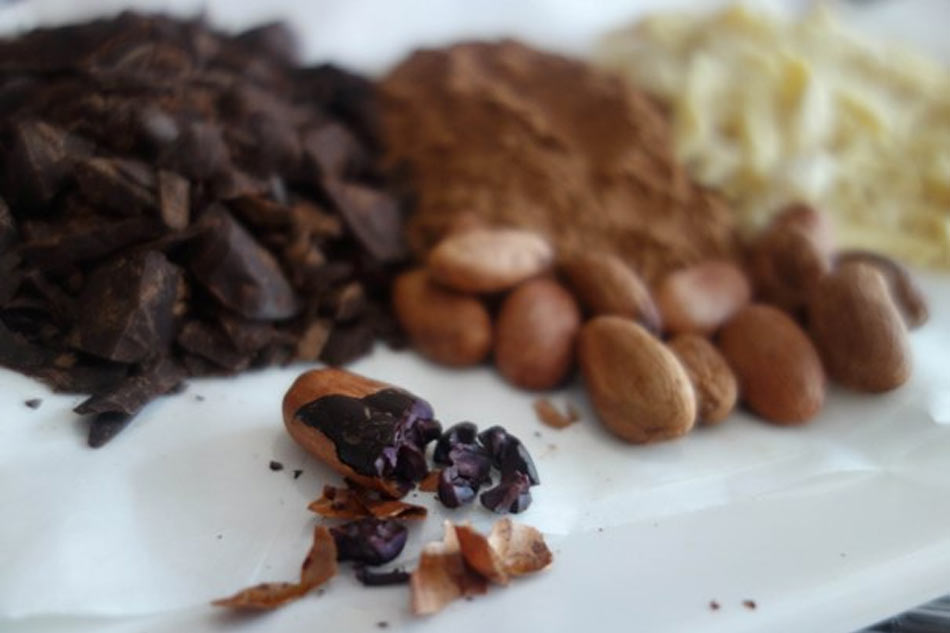Cordillera's tablea capital Abra expands cacao production | ABS-CBN

Welcome, Kapamilya! We use cookies to improve your browsing experience. Continuing to use this site means you agree to our use of cookies. Tell me more!
Cordillera's tablea capital Abra expands cacao production
Cordillera's tablea capital Abra expands cacao production
Ivan Abille and Carmela Jimenez,
ABS-CBN News
Published Apr 05, 2017 05:07 PM PHT
ABRA – This province is known for its bamboo products, but local officials and entrepreneurs recognize that Abra also has a big potential for cacao production.
ABRA – This province is known for its bamboo products, but local officials and entrepreneurs recognize that Abra also has a big potential for cacao production.
Recognizing this, the province is aiming to be one of the country’s biggest cacao producers.
Recognizing this, the province is aiming to be one of the country’s biggest cacao producers.
The Cordillera Administrative Region’s (CAR) tablea capital is Abra. Cacao growing here started in 1847, during Spanish Rule.
The Cordillera Administrative Region’s (CAR) tablea capital is Abra. Cacao growing here started in 1847, during Spanish Rule.
Old folks say that cacao and tablea production started in Bucay, the first capital of Abra, before Bangued.
Old folks say that cacao and tablea production started in Bucay, the first capital of Abra, before Bangued.
ADVERTISEMENT
“Kapag sinabi mong tablea, Bucay ang first na maalala nila, kasi sila ang unang producer ng tablea at only municipality na nagpo-produce ng tablea,” said Mayor Bernadette Baroña.
“Kapag sinabi mong tablea, Bucay ang first na maalala nila, kasi sila ang unang producer ng tablea at only municipality na nagpo-produce ng tablea,” said Mayor Bernadette Baroña.
(Tablea made Bucay popular. It was known as the only tablea-producing municipality in Abra.)
(Tablea made Bucay popular. It was known as the only tablea-producing municipality in Abra.)
Tablea-making lives on through clans that keep the tradition alive, such as the Somera-De La Paz family. Their family was the first manufacturer of tablea in the province.
Tablea-making lives on through clans that keep the tradition alive, such as the Somera-De La Paz family. Their family was the first manufacturer of tablea in the province.
Tablea maker Catalina De La Paz said that she inherited the skill, which requires patience, from her grandmother. She remains devoted to the craft.
Tablea maker Catalina De La Paz said that she inherited the skill, which requires patience, from her grandmother. She remains devoted to the craft.
“Kung walang trabaho, gumagawa ako hanggang gabi,” she said.
“Kung walang trabaho, gumagawa ako hanggang gabi,” she said.
Norma, Catalina’s daughter, paid for her medical school tuition by selling tablea products.
Norma, Catalina’s daughter, paid for her medical school tuition by selling tablea products.
“Sa paggawa ng tsokolate, yan ang kasama ko sa pag-unlad ng buhay, sa pag-aaral ng mga anak ko,” Norma Tagura said.
“Sa paggawa ng tsokolate, yan ang kasama ko sa pag-unlad ng buhay, sa pag-aaral ng mga anak ko,” Norma Tagura said.
The Department of Trade and Industry in Abra has taken it as a challenge to expand cacao production.
The Department of Trade and Industry in Abra has taken it as a challenge to expand cacao production.
“Ginawan natin ng paraan para the whole value chain--from production, plantation, processing, product development, and marketing ma-cover para may kumpletong assistance,” Arrel Bañez, Provincial Director, said.
“Ginawan natin ng paraan para the whole value chain--from production, plantation, processing, product development, and marketing ma-cover para may kumpletong assistance,” Arrel Bañez, Provincial Director, said.
As of this writing, cacao plantations occupied more than 260 hectares of land in Abra.
As of this writing, cacao plantations occupied more than 260 hectares of land in Abra.
ADVERTISEMENT
ADVERTISEMENT


